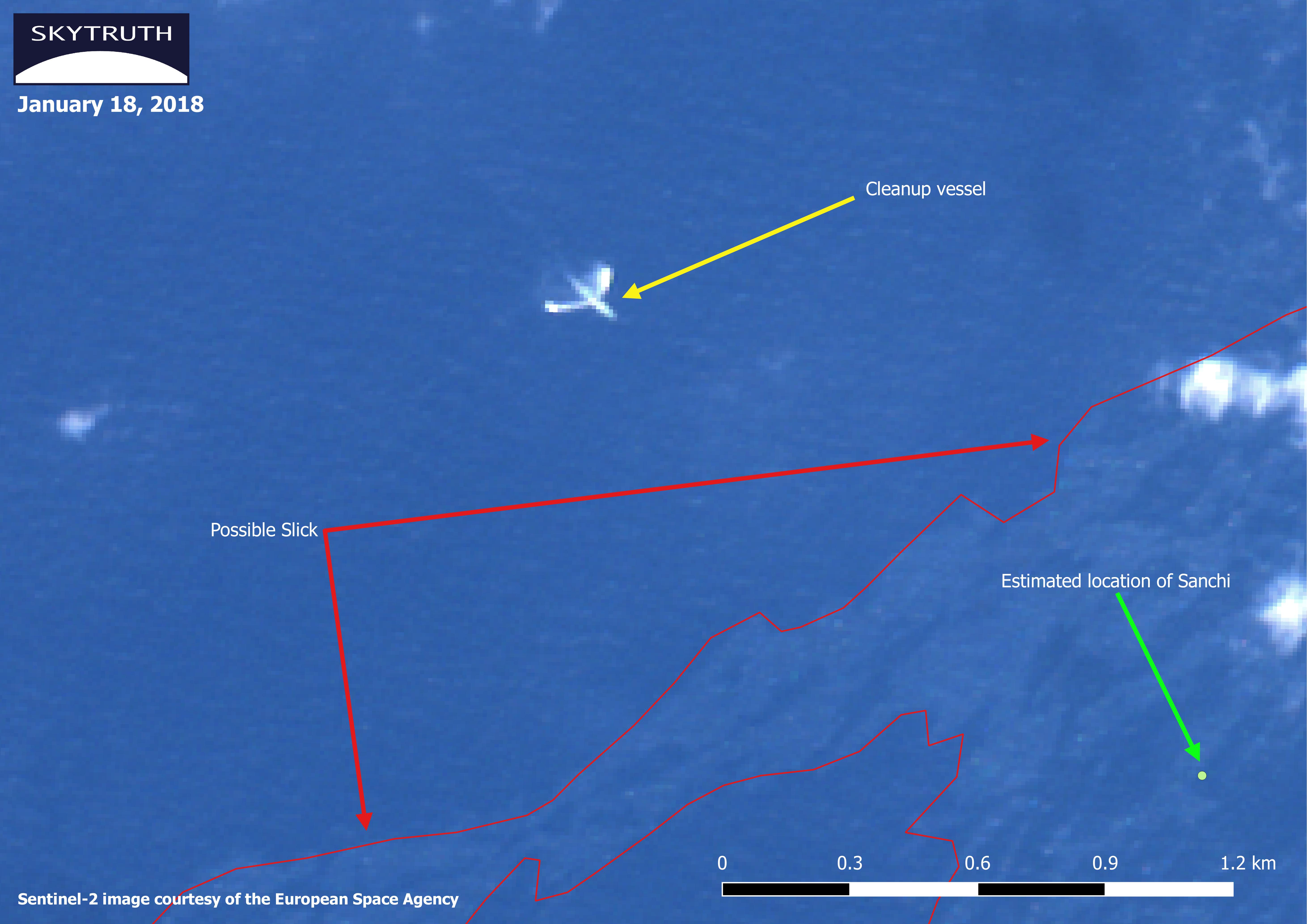The Search for Sanchi
On January 6th, a tanker named the Sanchi collided with a cargo ship called the CF Crystal in the East China Sea causing a fire which killed nearly all of the crew and eventually sank the Sanchi. While the CF Crystal (which survived the collision) was only carrying grain, the Sanchi was carrying natural-gas condensate. This ultra-light oil is highly flammable which no doubt contributed to the blaze that prevented any rescue of the crew. Though there was originally hope it would evaporate quickly, there have been reports of it approaching the Japanese coastline. More persistent heavy bunker oil from the ship’s fuel tanks might also be leaking, compounding the problem.
Usually, we use radar imagery collected by the European Space Agency’s Sentinel 1 satellite to track and monitor oil slicks, but, in this case, the area is not completely covered by Sentinel 1, and what imagery we have seen has been washed out by strong winds that make it difficult to see slicks. We’ve been relying on multispectral imagery from Sentinel 2, but heavy cloud cover in the area has made it difficult to locate the slick and monitor the cleanup and salvage operations.
These Sentinel 2 images do not show the slick as clearly as radar images would. Because we are working in the visible spectrum, we can only see a faint difference between the ocean and the lighter-than-usual slick. We’ve done our best to boost the contrast to highlight the slick, so the color of the water might seem a little brighter than usual.

Sentinel 2 image taken on January 18, showing vessels and slick around site of Sanchi wreck. We inferred the location of Sanchi based on the movements of response vessels, reconstructed from their AIS tracking broadcasts.
We can see two vessels which appear to be either spraying chemicals to disperse the slick or deploying oil-skimming gear, from booms extending from either side, as shown in this zoomed image:

This Planet image, also taken on January 18, showing part of a larger area of slick east of the Sanchi.
Thanks to Planet and their fleet of Dove satellites, we can see that the slick extends further to the east. We are also able to see the vessels in more detail:

This collection of close-up shows views of oil spill response vessels in the area from the previous image.
We have been following the ships in the area via their Automatic Identification System (AIS) broadcasts, and have seen a variety of Chinese and Japanese vessels come and go, including the Koyo Maru and Koshiki, Japanese patrol boats; the Dong Lei 6, a cleanup tanker; the Shen Qian Hao, a Chinese diving vessel; the Hai Xun 01, a Chinese Patrol Boat; and the Dong Hai Jiu 101, a Chinese Search and Rescue boat. Based on the movements of these vessels, we’ve inferred the location where the Sanchi likely sank and is the source of this ongoing spill.
We are doing our best to monitor this area as the clean-up continues.




